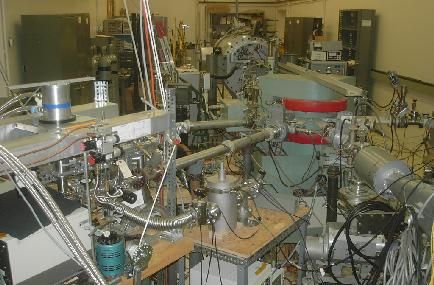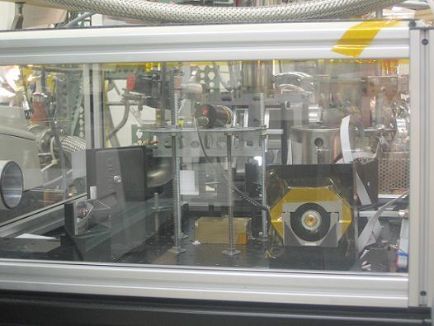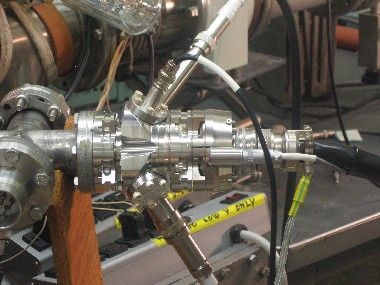The Cosmic Ice Laboratory - Laboratory Tour

We make extensive use of vacuum chambers, low-temperature cryostats, and infrared (IR) spectrometers in our work. Shown here is an ultra-high vacuum (UHV) system interfaced to an IR spectrometer.
For our research into the radiation chemistry of ices, we use a Van de Graaff accelerator capable of producing protons with energies up to about 1 MeV. The accelerator is shown in the photo above. The proton beam is steered in different directions with the large horizontal magnet (in red). Copper coils, like the two shown here, also are used to direct the proton beam toward our ice samples.


This is a different view of our proton accelerator, showing four horizontal beam tubes emerging from the large magnet (in red). In the lower left, the edge of an infrared spectrometer and the top of a cryostat (blue band) can be seen.
Shown here is a different experimental set-up. The object in the foreground is a spectrometer and the object in the back is a Table Optics Module (TOM) box. The spectrometer's infrared detector has been removed and placed in the TOM box to make servicing the equipment easier.


Shown here is a detail of the TOM box. The IR detector is contained in the silver dewar in the right of the picture.
Here is the UV lamp we use to study the influence of vacuum-ultraviolet photons on ices. The red glow is from the decay of excited-state hydrogen atoms.


Here is our electron gun. It is used to administer energy doses less than those of our Van de Graaff accelerator, but greater than those of our far-UV lamp.
